HIGHER EDUCATION INSTITUTIONS
Advance Research at Your Higher Education Institution.
Sponsor Foreign STEM Researchers at Your Institution
The STEM Research Initiative provides U.S. Higher Education Institutions with a reliable tool for sponsoring or hosting global experts in STEM fields.
With a goal of facilitating meaningful collaboration between academia and industry, this initiative enables foreign researchers to remain in the U.S. for up to five years—allowing them to advance research efforts at your institution, work in STEM fields at U.S.-based companies, and contribute to a stronger American innovation ecosystem. Whether you’re a university, college, or nonprofit, this initiative offers an exciting opportunity for driving innovation forward—on campus, in your local community, and across the nation.
Overview of STEM Research Initiative
STEM Research Initiative
From colleges and universities to nonprofit organizations, the STEM Research Initiative offers an easier way for American Higher Education Institutions to source, sponsor, and host talented foreign nationals involved in research and development from around the globe. Non-immigrant research scholars can legally remain in the U.S. for up to five years, staying at one institution for the entire duration or transferring their J-1 visa between multiple Higher Education Institutions, non-profit organizations, and U.S.-based companies.

Is My Institution or Eligible to Sponsor or Host Foreign STEM Researchers?
For the purposes of this initiative, eligibility is determined more by job function than specific job titles. For this reason, U.S.-based companies without official STEM classification can still qualify to participate in the program, as long as researchers’ roles fall into certain categories. Generally, positions in research and development, applied research, applied science, research roles that help generate new products or services, and similar will qualify.
Who Can Be Sponsored or Hosted Through the STEM Research Initiative?
This initiative is designed for non-immigrant foreign researchers and global experts in their respective fields, especially those interested in conducting STEM research, collaborating and exchanging ideas with their American peers, and advancing their professional prospects and network in the United States. While many participants hold master’s degrees or PhDs, foreign nationals with demonstrated expertise and a minimum of a bachelor’s degree are eligible to participate, including:
- Current J-1 Research Scholars
- Foreign nationals – R&D Experts
- F-1 Graduates
- Former Research Interns & Trainees
- Foreign employees/New hires in R&D
- Non-U.S. PhD Fellows
What Roles Can Researchers Be Sponsored or Hired For?
For the purposes of this initiative, eligibility is determined more by job function than specific job titles. For this reason, businesses without official STEM classification can still qualify to participate in the program, as long as researchers’ roles fall into certain categories. Generally, positions in research and development, applied research, applied science, research roles that help generate new products or services, and similar will qualify.
For more detailed information, review our FAQs.
How it Works

STEM Expert
U.S.-Based companies
Attorneys
Sponsor
HOSTING A RESEARCHER
SPONSORING A RESEARCHER
Hosting a Researcher
Participation Guide: How to Get Started
1 | Find a Research Candidate
In most instances, your current scholars, faculty, university partners, and/or team members will have suggestions on which global experts they want to bring on board. They are likely very familiar with other experts in their field of research through publications, research conferences, and other events. Occasionally, a foreign researcher may reach out to your institution or organization directly to express their interest. In addition, a matching platform is currently being built to match foreign researchers to relevant STEM research opportunities in the U.S. Once launched, this platform can help your institution or organization find qualified candidates directly.
2 | Reach out to one of our Sponsoring Organizations
Find a sponsor to work with on the application process and throughout the course of your researchers’ stay in the U.S. You can find a list of potential sponsors here.
3 | Prepare Paperwork & Apply for Visa
The sponsoring organization will work with you on what paperwork and documentation you’ll need to apply for the J-1 STEM Research Visa initiative.
4 | Map Out Logistics
- What is their timeline for bringing a foreign researcher(s) over to the U.S.? Do they have a desired start date in mind?
- What is their purpose for bringing over a foreign researcher? What will the researcher’s work be focused on?
- How will the researcher collaborate with their internal teams? Who will supervise their efforts?
- How will they compensate the foreign researcher: an hourly wage, bi-monthly salary, a stipend? How much can their organization afford to pay?
- What are their desired goals and outcomes for hosting a foreign researcher? What by what date?
- How will they measure progress?
5 | Ensure a Successful Start
Make a plan for pre- and post- arrival. Consider the following:
- What will the orientation process look like for your foreign STEM researcher?
- What will ensure a successful onboarding?
- Schedule a meeting to introduce your researcher to the rest of the team.
- Prepare a list of expectations and goals for the research engagement and ensure these are communicated clearly to your research.
6 | Collaborate with Sponsors on Ongoing Administration
Facilitate transfers to other academic Higher Education Institutions or employers.
Sponsoring a Researcher
Participation Guide: How to Get Started
1 | Find a Research Candidate
In most instances, your current scholars, faculty, and/or team members will have suggestions on which global experts they want to bring on board. They are likely very familiar with other experts in their field of research through publications, research conferences, and other events. Occasionally, a foreign researcher may reach out to your institution or organization directly to express their interest. In addition, a matching platform is currently being built to match foreign researchers to relevant STEM research opportunities in the U.S. Once launched, this platform can help your institution or organization find qualified candidates directly.
2 | Prepare Paperwork & Apply for Visa
The sponsoring organization will work with you on what paperwork and documentation you’ll need to apply for the J-1 STEM Research Visa initiative.
3 | Map Out Logistics
- What is their timeline for bringing a foreign researcher(s) over to the U.S.? Do they have a desired start date in mind?
- What is their purpose for bringing over a foreign researcher? What will the researcher’s work be focused on?
- How will the researcher collaborate with their internal teams? Who will supervise their efforts?
- How will they compensate the foreign researcher: an hourly wage, bi-monthly salary, a stipend? How much can their organization afford to pay?
- What are their desired goals and outcomes for hosting a foreign researcher? What by what date?
- How will they measure progress?
4 | Ensure a Successful Start
Make a plan for pre- and post- arrival. Consider the following:
- What will the orientation process look like for your foreign STEM researcher?
- What will ensure a successful onboarding?
- Schedule a meeting to introduce your researcher to the rest of the team.
- Prepare a list of expectations and goals for the research engagement and ensure these are communicated clearly to your research.
- Here are the steps listed from the same presentation (slightly different than the content from the BridgeUSA site posted in a comment above). [1]
5 | Manage Ongoing Administration
Facilitate transfers to other employers or academic Higher Ed Institutions

About the STEM Research Initiative
The STEM Researcher visa initiative is a collaboration between the U.S. Department of State, sponsoring organizations and U.S.-based companies electing to host foreign researchers at their organization. Developed in the White House Office of Technology and Innovation, the initiative was devised to make it easier for U.S.-based companies and institutions to tap into a diverse well of overseas talent and global perspectives. By nurturing collaboration between domestic and foreign researchers, it aims to advance innovation and accelerate STEM research in the U.S. and beyond
Learn moreFAQs for Higher Education Institutions
Want to read other user-specific FAQs?
Academic sponsors want to utilize the STEM initiative to place academic exchange visitors off campus and are very interested in creating partnerships with local STEM businesses. Can the Department provide an example of a third party agreement?
Only certain categories of BridgeUSA regulations establish requirements for third-party agreements when placing exchange visitors off campus, most notably for Trainees and Interns as contained at 22 CFR 62.22(g) and for College and University Students (student interns) at 22 CFR 62.23(i).While not required for categories other than Intern, Trainee and College and University Student (student intern), the Department refers sponsors to the requirements of the Form DS-7002 as an example for both assessing third-party organizations and an agreement that accurately outlines expectations for all parties for an off-campus placement.By way of example, in addition to any applicable requirements outlined in the regulations for a specific category of exchange visitor, a written agreement might include the following:Full description of position, title, duties, compensation (if any), location, dates, time commitment, how the program is related to the subject field listed on exchange visitor’s Form DS-2019, and the goals and objectives of the placement.Host organization information, including legal business name; a brief summary of the company’s goals and products and/or services it offers; and site location information, including an up-to-date physical address of the business.Expectations for host organization cooperation, including:Notification of the university sponsor promptly when participants arrive at the site to begin their exchange visitor program, when there are any changes or deviations to the program objectives, when exchange visitors are not meeting the requirements of their placements, or when exchange visitors leave their program 30 days or more ahead of their program end date.Contacting the university sponsor immediately in the event of any emergency involving exchange visitors or any situations that impact their health, safety, or welfare.Acknowledgement that the intent of the Exchange Visitor Program is to allow the exchange visitor to enhance skills and gain exposure to U.S. culture and business prior to returning home upon completion of the program.Commitment to contact the sponsor at the earliest available opportunity regarding any concerns, changes in, or deviations from this agreement.Responding in a timely way to all inquiries and monitoring activities of the sponsor.Commitment to adhere to all applicable regulations, terms, and conditions that govern the placement.As a best practice, and keeping in mind the general obligations of sponsors contained at 22 CFR 62.9 and 62.10, sponsors should also:Establish a monitoring plan for the duration of the exchange visitor’s placement by, for example,‚ÄØidentifying point of contacts, having protocols for reporting, planning for check-ins, and having a way to resolve any conflicts or issues that arise.Evaluate the exchange visitor’s performance and the host organization post-program.Offer host organizations an introduction to the Exchange Visitor Program to ensure they’re provided with accurate information and materials with respect to the objectives of the program and the nature and importance of the cultural components. Sponsors should emphasize the distinction between work-based learning, which is permitted, and ordinary employment or unskilled labor, which is not.Finally, before making the placement, and again keeping in mind the sponsor’s obligations under 22 C.F.R. 62.9 and 62.10 as well as any category-specific obligations and requirements, sponsors should:Assess whether host organizations will be a good match for an exchange visitor (e.g., by determining that the necessary infrastructure is in place to host and support an exchange visitor during their program). Host organizations also must show that their field of research or proposed work-based training plan aligns with the prospective exchange visitor’s program objective on their Form DS-2019.Ensure that the host organization possesses and maintains the ability, personnel, and resources to provide structured and guided work-based training, internship, and/or collaborative research experiences that achieve the goals and objectives of the Exchange Visitor Program.
As an academic institution and a J-1 sponsor, can a private business ask our institution to issue a Form DS-2019 on their behalf for an EV, even though they might not have an affiliation with our university?
Yes. Current BridgeUSA regulations allow a diverse spectrum of private sector organizations and businesses to host exchange visitors, including those in academic categories, e.g., Research Scholar. BridgeUSA sponsors remain responsible for the identification and placement of exchange visitors at reputable host organizations that offer exchange visitors quality training and/or research opportunities, and for ensuring the placements meet the regulatory requirements for specific categories.
As sponsors seek to pursue placements outside of traditional academic environments, some questions have arisen regarding the suitability of those placements. Can the Department elaborate on the appropriate duties of J-1 Research Scholars placed in private STEM-focused businesses?
As defined in 22 CFR 62.4(f), regardless of program length, research scholar activities may include research, lecturing, observing, consulting at research institutions, corporate research facilities, etc.Research scholars are expected to be able to share their expertise and perspectives through the provision of lecturing/teaching/training or consulting. While there will be some on-boarding of scholars and training in the context of learning about the operation of their hosting organizations, they should not be recipients of continuous training, which is more appropriate for other types of exchange visitor placements, such as the Intern and Trainee category. Exchange visitor research should be collaborative in nature, and any training to help prepare a scholar for a successful exchange should be incidental.Testing, preparing data for review; liaising between departments; and general laboratory duties‚ including the preparation of samples, operating and maintaining lab equipment, and keeping records of experimental results‚ are all considered appropriate duties by the Department.
Can a community college apply to become a Department-designated sponsor? If yes, what categories would they use to sponsor the placement of exchange visitors at local STEM businesses?
Yes, community colleges are eligible to apply for Department designation to become an Exchange Visitor Program sponsor. Details on applying for designation are available here: https://j1visa.state.gov/sponsors/become-a-sponsor/. Regardless of the sponsor type, the J-1 categories eligible for the STEM Research Initiative include College and University Student (Student Intern and Academic Training), Intern, Trainee, Specialist, Short term Scholar, Professor or Research Scholar.
Can a Department-designated university sponsor collaborate with local universities who are not Department-designated e.g., a local community college, to facilitate STEM exchanges on their campus? What about the placement of STEM exchange visitors off of the partner’s campus but within their network of area STEM businesses?
Responsible Officers have the discretion to request “Permission to Issue” Forms DS-2019 from the Department on behalf of non-designated academic or research institutions if sponsors determine such placements support the purpose of BridgeUSA, and the applicants and proposed institutions meet all eligibility and program requirements set forth in 22 CFR Part 62 BridgeUSA Regulations. The Department created Guidance Directive 2019-02 Permission to Issue in the Exchange Visitor Program to provide sponsors additional information on this process. Sponsors may coordinate with other academic institutions to identify viable host organizations for their exchange visitors; however, they may not abdicate their responsibility for ensuring the host organization meets all regulatory requirements prior to placement. In addition, any exchange visitors placed through this process will remain the responsibility of the sponsoring university. Additionally, sponsors must ensure that SEVIS and the exchange visitor’s Form DS-2019 reflects the actual site of activity (i.e., the STEM business).












